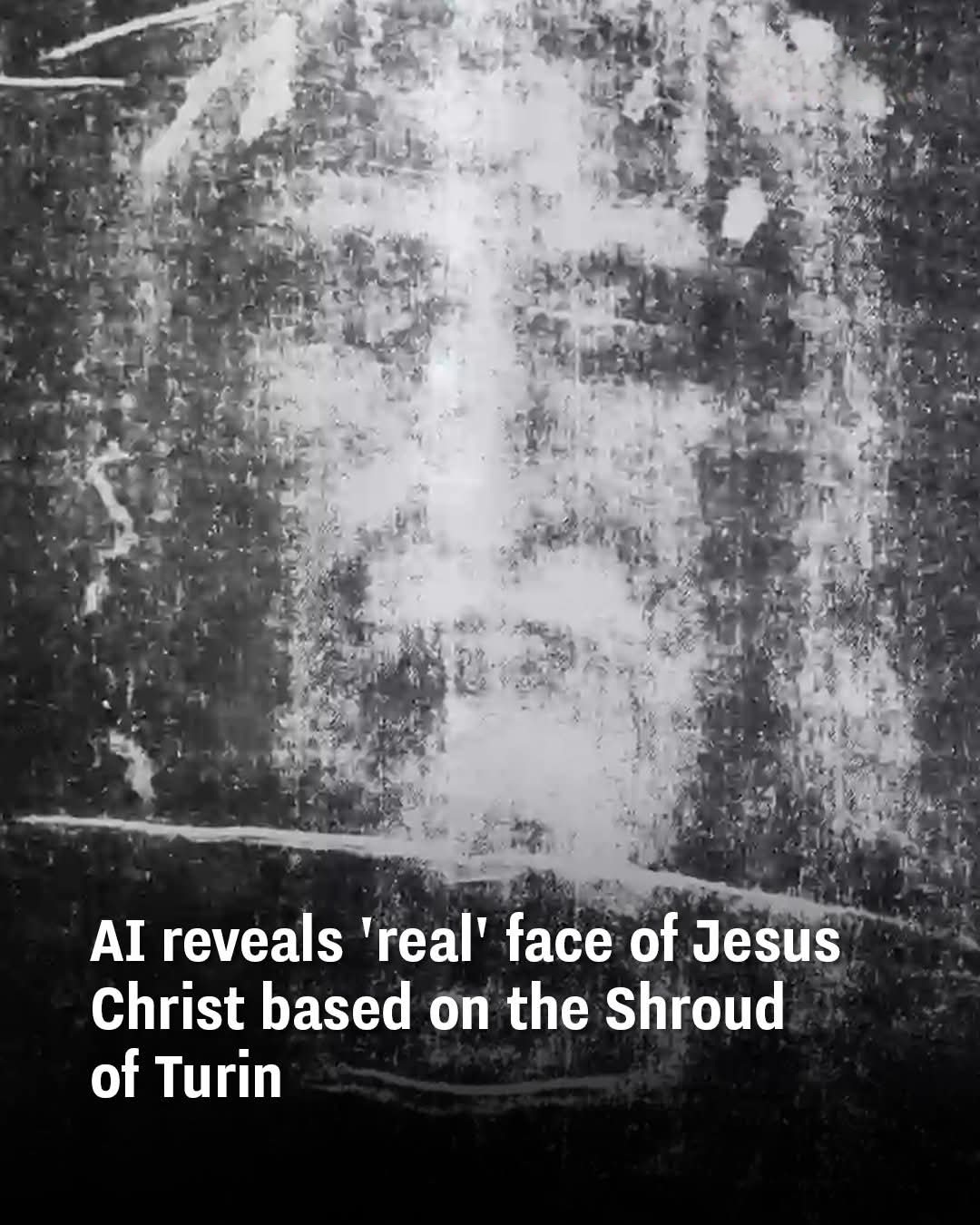Artificial intelligence has once again made headlines—this time by attempting to reveal the face of one of history’s most revered and mysterious figures: Jesus Christ. Using advanced technology and the famous Shroud of Turin as its reference, AI has generated a strikingly lifelike image of what Jesus may have looked like. The results, while captivating for many, have reignited age-old debates about religious iconography, cultural representation, and the ethical use of modern technology.

At the center of this digital resurrection is the Shroud of Turin, a 14-foot linen cloth that bears the faint, ghostly image of a man who appears to have suffered crucifixion. For centuries, many believers have considered the shroud to be the burial garment of Jesus Christ. It has been housed in the Cathedral of San Giovanni Battista in Turin, Italy, since 1578 and remains one of Christianity’s most closely studied and controversial relics. Though questions about its authenticity persist, recent advancements in X-ray fluorescence imaging have led some researchers to conclude that the cloth could date back nearly 2,000 years—coinciding with the time Jesus is believed to have lived.
To bring the image on the shroud to life, the AI art platform Midjourney was given the task of transforming the faint facial imprint into a detailed, realistic portrait. The generated image presents a man with shoulder-length dark hair, a full beard, and visible injuries consistent with crucifixion—bruising and swelling on the face, particularly around the eyes and forehead. In many ways, the result aligns with traditional Western depictions of Jesus seen in paintings and sculptures for centuries. Not surprisingly, the image quickly spread across social media platforms, captivating viewers and sparking conversations across religious and academic communities.
While many people found the image deeply moving or spiritually significant, others raised concerns about its accuracy and broader implications. Critics argue that the AI-generated face reinforces long-held Eurocentric depictions of Jesus, which may not reflect historical reality. Dr. Meredith Warren, a senior lecturer in Biblical and religious studies at the University of Sheffield, offered a more grounded view. According to her, Jesus would have likely resembled a typical Middle Eastern man of the 1st century—meaning darker skin, brown eyes, and a more rugged, weathered appearance from spending much of his life outdoors. “He wouldn’t have looked like the clean-shaven, fair-skinned Jesus often portrayed in European art,” Dr. Warren explained.
Her critique highlights a larger issue: how technology can sometimes unintentionally perpetuate biased narratives. When AI tools are fed data largely based on Western art and assumptions, they tend to reproduce those images, reinforcing cultural stereotypes rather than challenging them. That’s why some scholars and theologians caution against accepting AI-generated religious images as factual representations.
The Shroud of Turin itself is no stranger to skepticism. In 1988, a widely publicized carbon dating test concluded that the cloth was created between 1260 and 1390, suggesting it was a medieval forgery. However, this conclusion has since been disputed due to concerns about the integrity of the fabric sample tested. More recent scientific efforts, particularly those utilizing advanced imaging and radiation-based dating methods, have opened the door once again to the possibility that the shroud could be authentic. But despite technological advancements, definitive proof remains elusive—and the debate continues.
For many people of faith, though, the significance of the Shroud—and by extension, the AI-generated face—isn’t necessarily about scientific validation. Instead, it lies in what these symbols evoke: a sense of closeness to Jesus and a tangible connection to a spiritual past. Even those who doubt the shroud’s authenticity often acknowledge its emotional and devotional power.
However, the growing role of AI in religious interpretation is forcing both scholars and believers to grapple with new ethical questions. Should machines be used to recreate sacred figures? Does this blur the line between reverence and simulation? And perhaps more importantly, how do we ensure that such representations honor the diversity and complexity of historical truth rather than oversimplifying it?
As AI continues to shape our understanding of history and religion, the image of Jesus generated from the Shroud of Turin stands as both a technological marvel and a mirror reflecting our cultural assumptions. Whether viewed as a sacred glimpse into the past or a digitally enhanced fantasy, it undeniably reminds us of the power images hold in shaping faith, identity, and debate.





